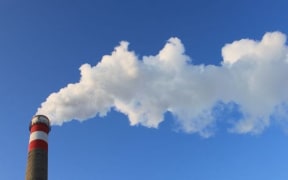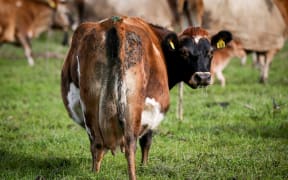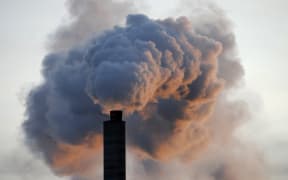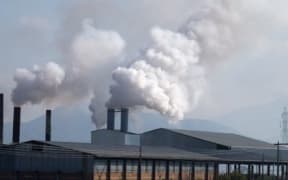ANALYSIS: New Zealand can and should wean its economy off fossil fuels to tackle climate change, a report published this week by the Royal Society of New Zealand says.
It's the second of two major papers published by the eminent science body, in the same week Climate Change Minister Paula Bennett travelled to New York to join 175 other nations in signing the Paris Agreement.
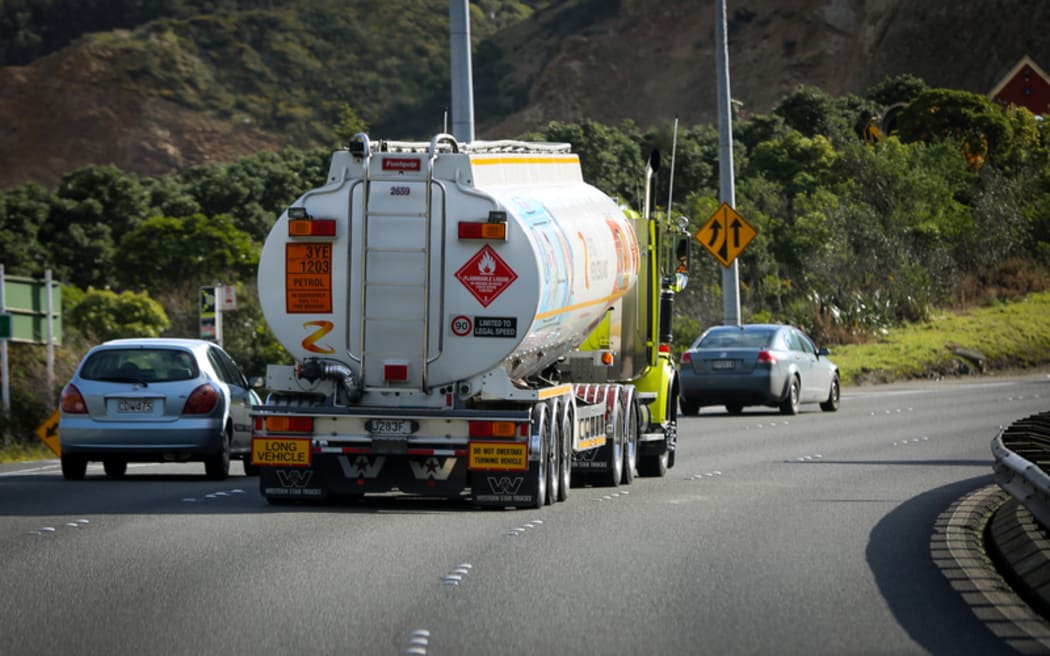
Photo: RNZ / Alexander Robertson
The historic climate deal aims to limit global temperature rise to below two degrees Celsius.
Fifteen countries have already ratified the agreement and 19, including the US and China, have announced their intent to ratify this year.
New Zealand has not yet committed to a timeframe.
The first of the Royal Society's reports warned that even a two-degree rise in temperatures would put the country at increased risk of floods, drought and extreme weather events, as well as continued sea-level rise that could swamp urban coasts.
This latest report lays out clear options for how New Zealand could reduce greenhouse gas emissions in all sectors of the economy.
They included transport - New Zealand's largest and fastest-growing emitter of carbon dioxide - and agriculture, which contributed almost half of the total emissions through methane.
The report suggests the following:
- New Zealand's 90 percent target by 2025 is technically and economically possible, and could even be higher
- Renewable heat systems have good potential for buildings and industry
- Emissions from transport could be reduced by at least 60 percent if policy were in place to encourage fuel-efficient vehicles, low-carbon fuels such as renewable electricity and biofuels, electric vehicles, using buses, light rail, cycling and walking; improving urban design to encouraging their use
- Freight should shift from road to rail and sea
- Emissions from buildings could be reduced significantly by improving insulation in buildings, retrofitting existing building stock and integrating renewable energy systems
- Energy efficiency initiatives can reduce greenhouse gas emissions significantly
- Carbon dioxide capture and storage (CCS) could be an option in the long term and, if coupled with bioenergy (BECCS), would give negative greenhouse gas emissions.
- Increasing adoption of best practices can help reduce the present growth in emissions from agriculture, but substantial reductions will be challenging in the long term unless there is a strategic decision to gradually reduce the reliance on meat and milk production for the growth of the economy
- Significantly increasing the land area of plantation forests could offset up to a quarter of our total greenhouse gas emissions over the next two to three decades. Forest sinks can only be an interim solution, however, until all available land has been planted
- The NZ Emissions Trading Scheme has been ineffective in reducing New Zealand's emissions. Reform is needed to provide clear and stable investment signals
- Policies, targets, regulations, infrastructure, and market settings should be developed systematically to support low-carbon choices by businesses, cities and households
New Zealand's commitment under the Paris Agreement was to reduce greenhouse gas emissions to 11 percent below 1990 levels by 2030.
However, it remained conditional on aspects of the deal, including a carbon market which would allow for the purchase of carbon credits.
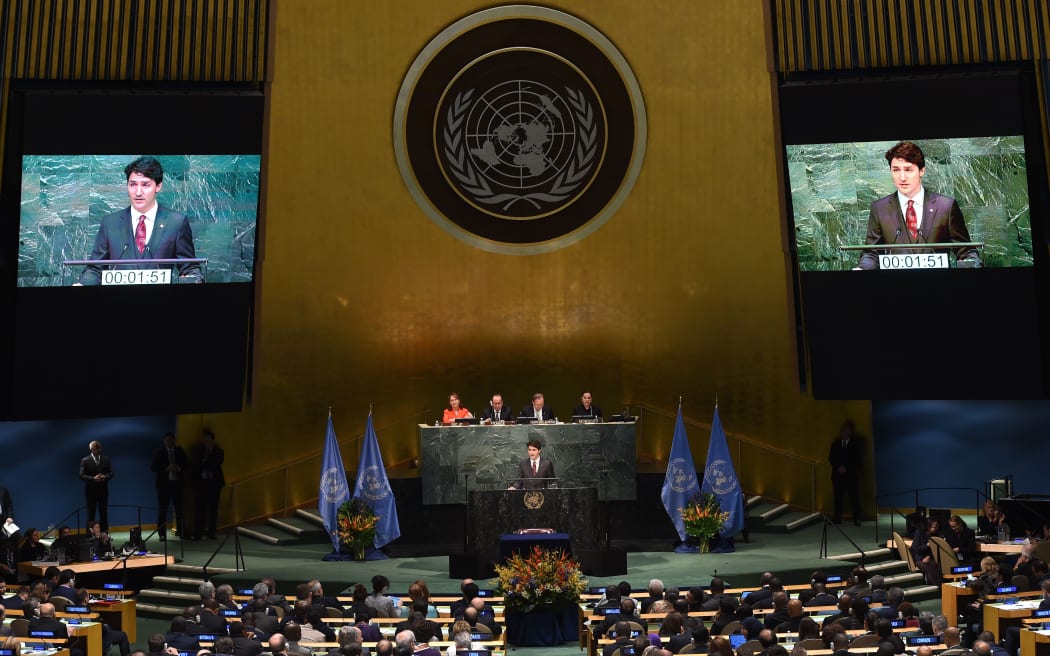
Canadian Prime Minister Justin Trudeau addresses the UN at the Paris Agreement signing ceremony. Photo: AFP
Meanwhile, our total greenhouse gas emissions have been increasing steadily, with net emissions now at 42 percent above 1990 levels. They are projected to keep rising over the next decades.
In the past, the government has used trading in international carbon credits rather than domestic emissions reductions policy to meet its obligations under the Kyoto Protocol, the predecessor of the Paris Agreement.
It has been criticised, and accused of cheating in another report by the Morgan Foundation, for trading in credits of dubious integrity issued by Russia and the Ukraine.
The Emissions Trading Scheme allows polluters to purchase carbon credits from companies that capture emissions, but the Ukrainian credits did not represent any real reductions in greenhouse gas emissions.
While such deals were not strictly outside the rules of the Kyoto Protocol, they were not in the spirit of the Paris climate deal.
The latest Royal Society report made it clear carbon dioxide emissions would need to drop to zero this century for the world to have a chance of slowing down the warming.
The collective pledges countries made under the Paris Agreement are not enough to achieve its goal of a two-degree limit to warming, and the report stresses that ambitious action is needed, now.
Stronger mitigation action now makes not only scientific but economic sense.
Carbon dioxide remains in the atmosphere for hundreds of years, so even if we figure out more effective ways of reducing emissions in future it is still better to start now and avoid accumulating emissions.
The report's author, Massey University renewable energy expert Ralph Sims, said the pressure would be on all countries to come up with more robust targets and New Zealand would have to do better as well.
"There is a clear case for immediate action. New research and technologies will continue to emerge but many mitigation options are already well-understood and achievable.
"We can start immediately by deploying low-risk mitigation actions whilst planning for and trialling more ambitious emission reductions options and system changes to commence the necessary transition to a low-carbon economy."
